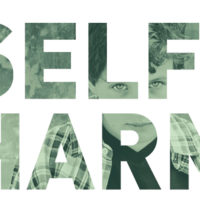self-harm
-

Childhood maltreatment increases suicide risk despite strong neuropsychological functioning
A cross-sectional and prospective study recently examined the independent effects of childhood maltreatment, neuropsychological functioning, and psychopathology, and their potential interactions with suicidal behaviour.
Read more -

Social connectedness is a protective factor against short-term suicide attempts (post discharge) in school children
Researchers in the USA have performed a multi-site, prospective analysis of >2,000 adolescents aged 12-17 years to try to determine the short-term predictors of suicide attempts within 3-months of an emergency department visit. The study population was enriched to include a high proportion of adolescents at risk for suicide attempts.
Read more -

Continued family dysfunction accounts for the association between childhood adversity and adolescent self-harm
A research digest.
Read more
Non-suicidal self-injury (NSSI) is any deliberate attempt at inflicting physical self-harm in the absence of suicidal intent. NSSI peaks during adolescence, with roughly 17% of adolescents reporting having engaged in it at least once. -

Violent self-harm may predict subsequent suicide
Researchers in Sweden have found that violent methods of self-harm requiring hospitalization may indicate high risk of future suicide in adolescents and young women.
Read more -

Navigating an unfamiliar world: how parents of young people that self-harm experience support and treatment
Participants described a range of reactions to treatment and support for themselves and the young person. We identified three main themes: attitudes towards the young person, practical aspects of help and the need for parents to be involved.
Read more -

The family environment mediates risk of self-harming
Non-suicidal self-injury (NSSI) constitutes any deliberate physical injury to oneself that is not life-threatening. It is a behaviour that commonly starts during adolescence. Childhood family adversity (CFA) is associated with NSSI, but the risk pathways between CFA and NSSI are unclear.
Read more -

Clinical characteristics of adolescents referred for treatment of depressive disorders
Low mood and depression often emerge during adolescence and are associated with long-term difficulties including increased risk of developing other mental health disorders, educational underachievement, low income/unemployment, and risk of suicidal behaviour.
Read more -

Self-Harm: The Parent’s View
Though it is not always openly discussed, the impact self-harm has on the individual and their family, can be very distressing. For someone to recover from ‘rock-bottom’ requires support, with family being an obvious source. It makes sense that the pillars of this support system, parents in most cases, feel equipped to support their child in recovering from such an experience. Saying this, there is little research on parents’ perspective of care following self-harm.
Read more